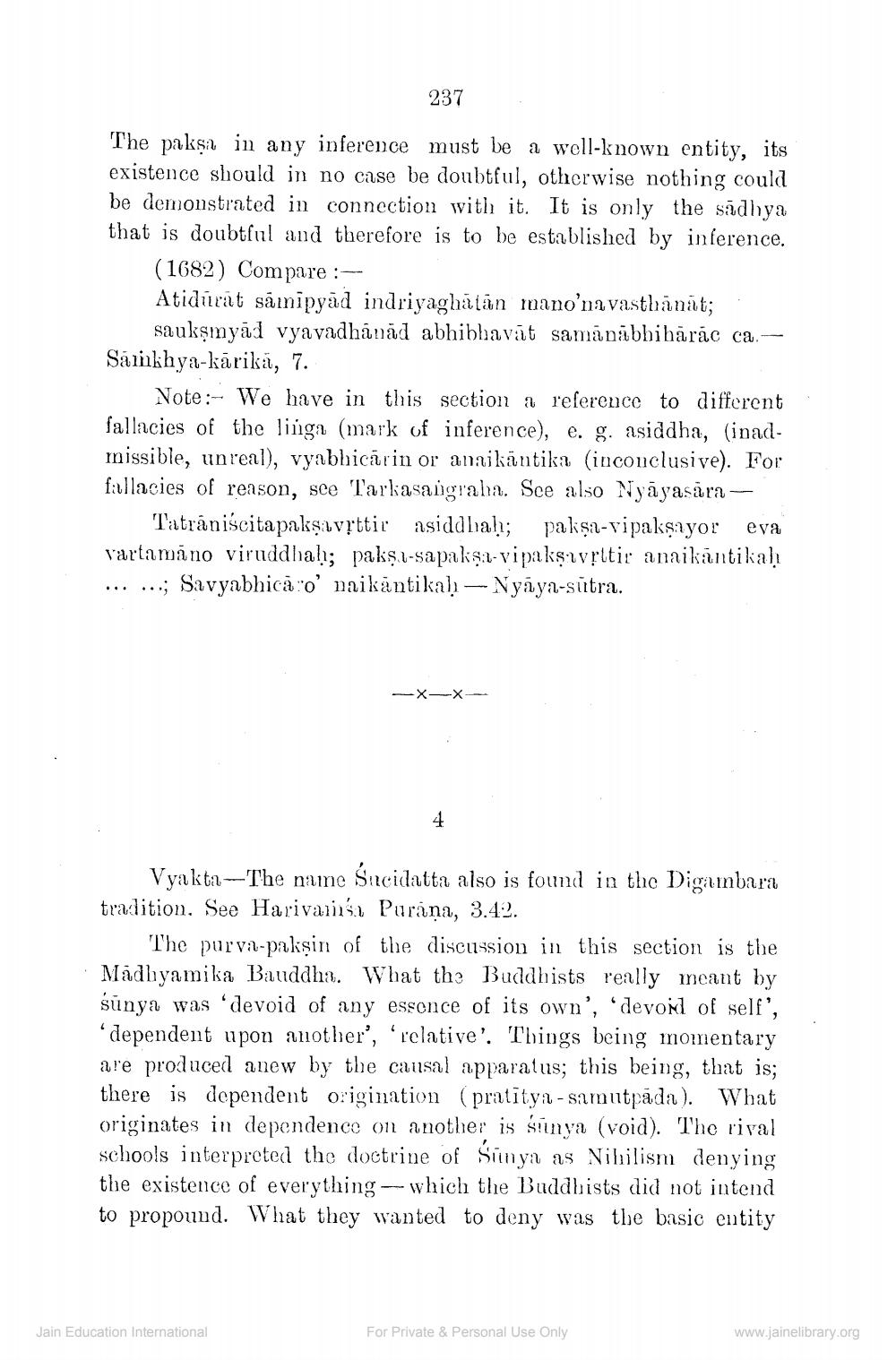________________
237
The pakşil in any inference must be a well-known entity, its existence should in no case be doubtful, otherwise nothing could be demonstrated in connection with it. It is only the sādhya that is doubtful and therefore is to be established by inference.
(1682) Compare :-- Atidurat samipyād indriyaghātān mano'na vasthänāt;
sauksmyād vyavadhánād abhibhavāt samānābhibärác ca.Samkhya-kārika, 7.
Note:- We have in this section a reference to different fallacies of the linga (mark of inference), e. g. asiddha, (inadmissible, unreal), vyabhicărin or anaikäntika (inconclusive). For fallacies of reason, see Tarkasangraha. Sce also Nyāyasāra —
Tatrāniścita pakşlvittir asiddhah; pakşa-vipakşıyor eva Vartamā no viruddhal; pakşı-sapakşi-vipaksuvřltir anaikāntikah ... ...; Savyabhica o' naikāntikah - Nyāya-sútra.
-
X-
X
Vyakta ---The name Śacidatta also is found in the Digambara tradition. See Harivarisa Purana, 3.42.
The pur vil-pakşin of the discussion in this section is the Madhyamika Bauddha. What the Buddhists really meant by sünya was 'devoid of any essence of its own', 'devoid of self',
dependent upon another', 'relative'. Things being momentary ale produced anew by the causal apparatus; this being, that is; there is dependent origination (pratītyl - samutpada). What originates in dependence on another is siunya (void). The rival schools interpreted the doctrine of Sinya as Nihilism denying the existence of everything - which the Buddhists did not intend to propound. What they wanted to deny was the basic entity
Jain Education International
For Private & Personal Use Only
www.jainelibrary.org




